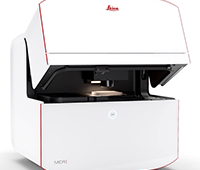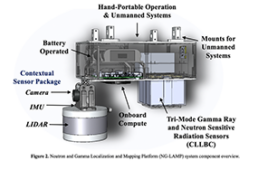 When capturing images at the atomic scale, even tiny movements of the sample can result in skewed or distorted images—and those movements are virtually impossible to prevent. Now microscopy researchers at North Carolina State Univ. have developed a new technique that accounts for that movement and eliminates the distortion from the finished product.
When capturing images at the atomic scale, even tiny movements of the sample can result in skewed or distorted images—and those movements are virtually impossible to prevent. Now microscopy researchers at North Carolina State Univ. have developed a new technique that accounts for that movement and eliminates the distortion from the finished product.
At issue are scanning transmission electron microscopes (TEMs), which can capture images of a material’s individual atoms. To take those images, scientists have to allow a probe to scan across the sample area—which has an area of less than 5 nm. That scanning can take tens of seconds.
The sample rests on a support rod, and while the scanning takes place the rod expands or contracts due to subtle changes in ambient temperature. The rod’s expansion or contraction is imperceptible to the naked eye, but because the sample area is measured in nanometers the rod’s movement causes the sample material to shift slightly. This so-called “drift” can cause the resulting scanning TEM images to be significantly distorted.
“But our approach effectively eliminates the effect of drift on scanning TEM images,” says Dr. James LeBeau, an assistant professor of materials science and engineering at NC State and senior author of a paper describing the work.
Researchers programmed the microscope to rotate the direction in which it scans the sample. For example, it might first take an image scanning from left to right, then take one scanning from top to bottom, then right to left, then bottom to top. Each scanning direction captures the distortion caused by drift from a different vantage point.
The researchers plug those images into a program they developed that measures the features in each image and uses that data to determine the precise direction and extent of drift within the sample. Once the drift is quantified, the images can be adjusted to remove the distortion caused by the drift. The resulting images accurately represent the actual structure of the sample and give scientists new capabilities to understand bonding between atoms.
“Historically, a major problem with drift has been that you need to have a reference material in any nanoscale image, so that you can tell how the image has been distorted,” LeBeau says. “This technique makes that unnecessary. That means we can now look at completely unknown samples and discover their crystalline structures—which is an important step in helping us control a material’s physical properties.”
Source: North Carolina State Univ.




